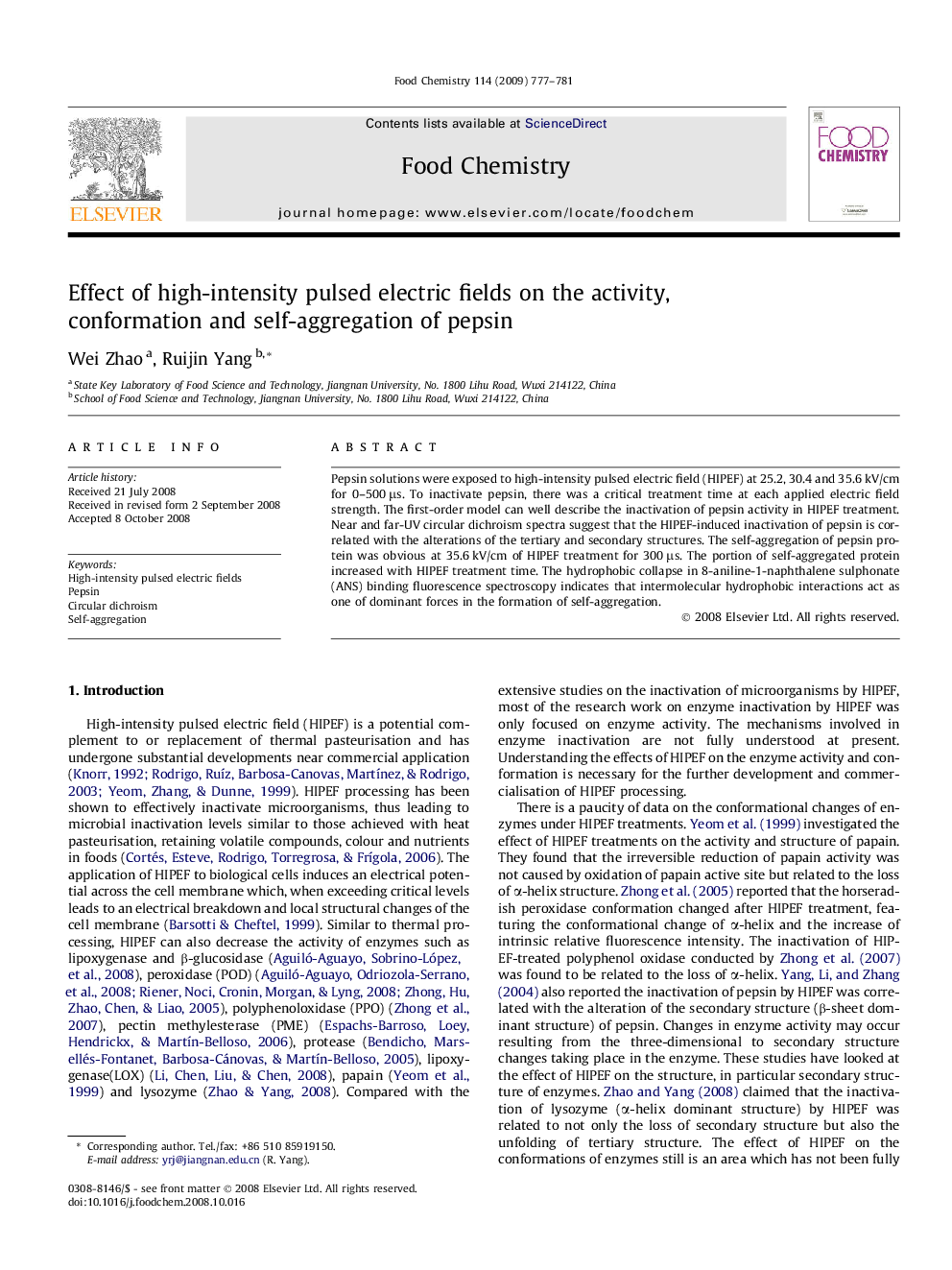| Article ID | Journal | Published Year | Pages | File Type |
|---|---|---|---|---|
| 1191096 | Food Chemistry | 2009 | 5 Pages |
Pepsin solutions were exposed to high-intensity pulsed electric field (HIPEF) at 25.2, 30.4 and 35.6 kV/cm for 0–500 μs. To inactivate pepsin, there was a critical treatment time at each applied electric field strength. The first-order model can well describe the inactivation of pepsin activity in HIPEF treatment. Near and far-UV circular dichroism spectra suggest that the HIPEF-induced inactivation of pepsin is correlated with the alterations of the tertiary and secondary structures. The self-aggregation of pepsin protein was obvious at 35.6 kV/cm of HIPEF treatment for 300 μs. The portion of self-aggregated protein increased with HIPEF treatment time. The hydrophobic collapse in 8-aniline-1-naphthalene sulphonate (ANS) binding fluorescence spectroscopy indicates that intermolecular hydrophobic interactions act as one of dominant forces in the formation of self-aggregation.
